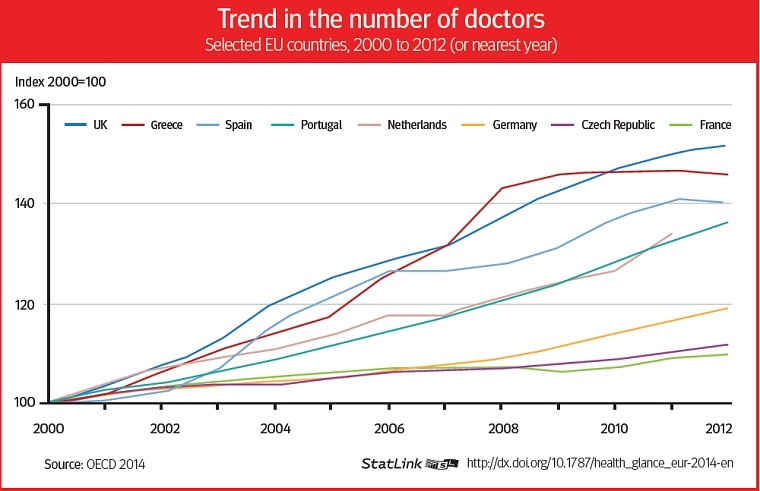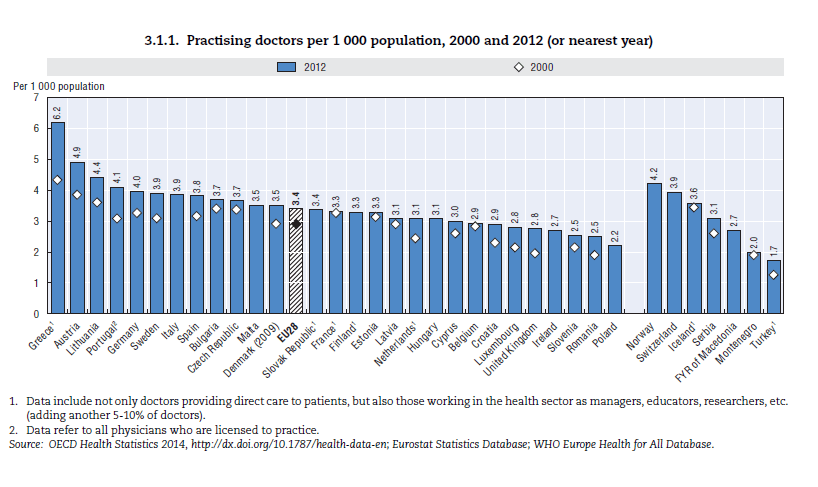People in OECD countries are living longer than before. While improved lifestyles and better medical treatments are some reasons, an OECD article wonders if the number of doctors in a country is also a contributing factor for this phenomenon.
The following chart shows the trend in the number of doctors in select OECD nations:
Click to enlarge
Source: Doctors at large, OECD Observer
From the article:
After all, in most European countries at least, the absolute number of doctors has increased between 2000 and 2012. Overall, looking at the entire period, there were about 20% more doctors in 2012 compared with 2000. From 2000 to 2012, there were 50% more doctors in the United Kingdom, 20% more in Germany, 40% more in Spain, one-third more in Portugal and in the Netherlands (2011). The exceptions are France and the Czech Republic, where the number of doctors has remained relatively stable over the period, while life expectancy has also improved.
It is surprising that the number of doctors in UK increased by 50% from 2000 to 2012 despite budget cuts and other issues with NHS. In general this is good news for British residents since higher number of doctors makes it easier to access healthcare and should reduce wait times. It should be noted that the UK imports thousands of doctors from former colonial countries and from Eastern Europe each year.
The graph below shows the doctors per 1,000 population in OECD countries of Europe:
Click to enlarge
Source: Health at a Glance: Europe 2014, OECD
Greece had the highest number of doctors per 1,000 as the chart above shows followed by Austria. Overall since 2000, the doctors per capita in European countries has increased except in France where it has been flat. As mentioned above, the growth rate has been strong in the UK.
For comparison, the U.S. has 2.45 doctors per 1,000 population according to the CIA’s World Factbook. This is lower than major European countries. For example the figures are for Germany, France, Spain and UK are 4.0, 3.3, 3.8 and 2.8 respectively. The reason for the doctor shortage are many including the fact that unlike other countries healthcare is private in the U.S. and the American Medical Association (AMA) controls the number of doctors in the country. This private lobby group of physicians has an inherent conflict of interest since higher number of doctors would be mean more competition and fewer jobs and lesser income for existing doctors. The free market concept of supply and demand does not apply to the healthcare professions. It is tightly controlled in order to maintain the status quo. Ultimately it is public that pays the price due to the shortage of doctors in the US. For example, an emergency visit to a hospital becomes a cruel joke with waiting times of 3-4 hours unless one is about to die from an accident or a gunshot wound. To add insult to this injury, after 3-4 months the patient gets hit with a $300-$400 bill depending on the health insurance they have.





